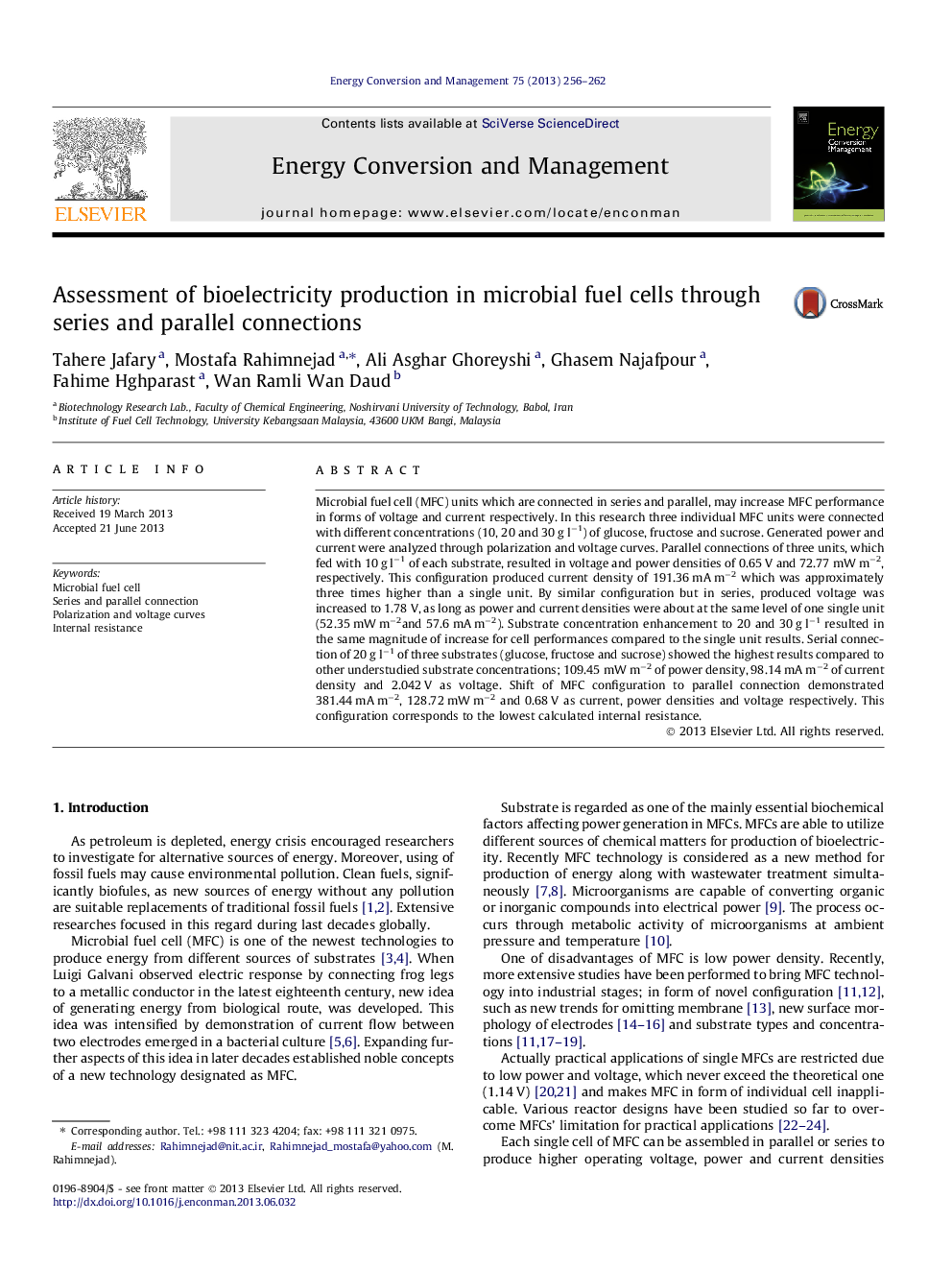| Article ID | Journal | Published Year | Pages | File Type |
|---|---|---|---|---|
| 7166248 | Energy Conversion and Management | 2013 | 7 Pages |
Abstract
Microbial fuel cell (MFC) units which are connected in series and parallel, may increase MFC performance in forms of voltage and current respectively. In this research three individual MFC units were connected with different concentrations (10, 20 and 30 g lâ1) of glucose, fructose and sucrose. Generated power and current were analyzed through polarization and voltage curves. Parallel connections of three units, which fed with 10 g lâ1 of each substrate, resulted in voltage and power densities of 0.65 V and 72.77 mW mâ2, respectively. This configuration produced current density of 191.36 mA mâ2 which was approximately three times higher than a single unit. By similar configuration but in series, produced voltage was increased to 1.78 V, as long as power and current densities were about at the same level of one single unit (52.35 mW mâ2and 57.6 mA mâ2). Substrate concentration enhancement to 20 and 30 g lâ1 resulted in the same magnitude of increase for cell performances compared to the single unit results. Serial connection of 20 g lâ1 of three substrates (glucose, fructose and sucrose) showed the highest results compared to other understudied substrate concentrations; 109.45 mW mâ2 of power density, 98.14 mA mâ2 of current density and 2.042 V as voltage. Shift of MFC configuration to parallel connection demonstrated 381.44 mA mâ2, 128.72 mW mâ2 and 0.68 V as current, power densities and voltage respectively. This configuration corresponds to the lowest calculated internal resistance.
Related Topics
Physical Sciences and Engineering
Energy
Energy (General)
Authors
Tahere Jafary, Mostafa Rahimnejad, Ali Asghar Ghoreyshi, Ghasem Najafpour, Fahime Hghparast, Wan Ramli Wan Daud,
